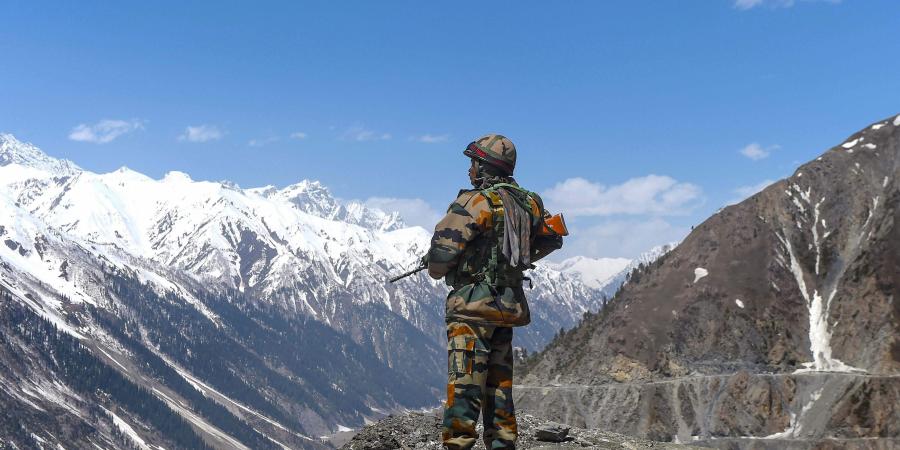The talks are slated to be held around 8 AM in the Border Personnel Meeting Point at Maldo in Chushul sector of Eastern Ladakh.
New Delhi, June 5;
The diplomatic dialogue between Indian and Chinese armies on Ladakh standoff will be held as per plan on Saturday. Ending speculations of backing out, China has announced that Major General Liu Lin will represent the People’s Liberation Army at the Corp Commander-level talks.
Major General Liu Lin is the commander of the Southern Xinjiang Military District. The Indian delegation at the talks is also likely to be headed by a Corp commander-level officer.
The talks are slated to be held around 8 AM in the Border Personnel Meeting Point at Maldo in the Chushul sector of Eastern Ladakh.
The dialogue is both armies’ first major attempt to resolve the month-long bitter border standoff in eastern Ladakh even as both militaries maintained their aggressive posturing in the sensitive areas in the high-altitude region.
Multiple meetings between local commanders have not defused tensions, turning the focus to diplomatic talks in Delhi and Beijing and Saturday’s parley between top generals from the Indian Army and the People’s Liberation Army.
In Saturday’s meeting, the Indian side is expected to press for the restoration of the status quo ante in at least Pangong Tso and Galwan Valley to gradually deescalate the tension and removal of temporary camps erected by China after a violent face-off between the two sides on May 5.
The Indian delegation will also insist on the implementation of the strategic guidelines issued by the two militaries in line with decisions taken by Prime Minister Narendra Modi and Chinese President Xi Jinping in their first informal summit in April 2018 in Wuhan, the sources told PTI.
It is learnt that two sides are also engaged in diplomatic talks to find a solution to the face-off which is turning out to be the most serious military standoff between the two armies after the Doklam episode of 2017. Modi and Xi held their informal summit in Wuhan months after the Doklam standoff.
After the standoff began in early last month, Indian military leadership decided that Indian troops will adopt a firm approach in dealing with the aggressive posturing by the Chinese troops in all disputed areas of Pangong Tso, Galwan Valley, Demchok and Daulat Beg Oldie.
The Chinese army is learnt to have deployed around 2,500 troops in Pangong Tso and Galwan Valley besides gradually enhancing temporary infrastructure and weaponry.
The sources said satellite images have captured significant ramping up of defence infrastructure by China on its side of the de-facto border including construction activities at a military airbase around 180 km from the Pangong Tso area.
China has also enhanced its presence in certain areas along the Line of Actual Control in Northern Sikkim and Uttarakhand following which India has also been its presence by sending additional troops, they said.
The trigger for the face-off was China’s stiff opposition to India laying a key road in the Finger area around the Pangong Tso Lake besides construction of another road connecting the Darbuk-Shayok-Daulat Beg Oldie road in Galwan Valley.
The road in the Finger area in Pangong Tso is considered crucial for India to carry out patrol. India has already decided not to stall any border infrastructure projects in eastern Ladakh in view of Chinese protests.
Government sources said military reinforcements including troops, vehicles and artillery guns were sent to eastern Ladakh by the Indian Army to shore up its presence in the areas where Chinese soldiers were resorting to aggressive posturing.
The situation in eastern Ladakh deteriorated after around 250 Chinese and Indian soldiers were engaged in a violent face-off on the evening of May 5 which spilled over to the next day before the two sides agreed to “disengage”.
However, the standoff continued.
The incident in Pangong Tso was followed by a similar incident in north Sikkim on May 9.
The troops of India and China were engaged in a 73-day stand-off in Doklam tri-junction in 2017 which even triggered fears of a war between the two nuclear-armed neighbours.
The India-China border dispute covers the 3,488-km-long LAC. China claims Arunachal Pradesh as part of southern Tibet while India contests it.
Both sides have been asserting that pending the final resolution of the boundary issue, it is necessary to maintain peace and tranquillity in the border areas.




